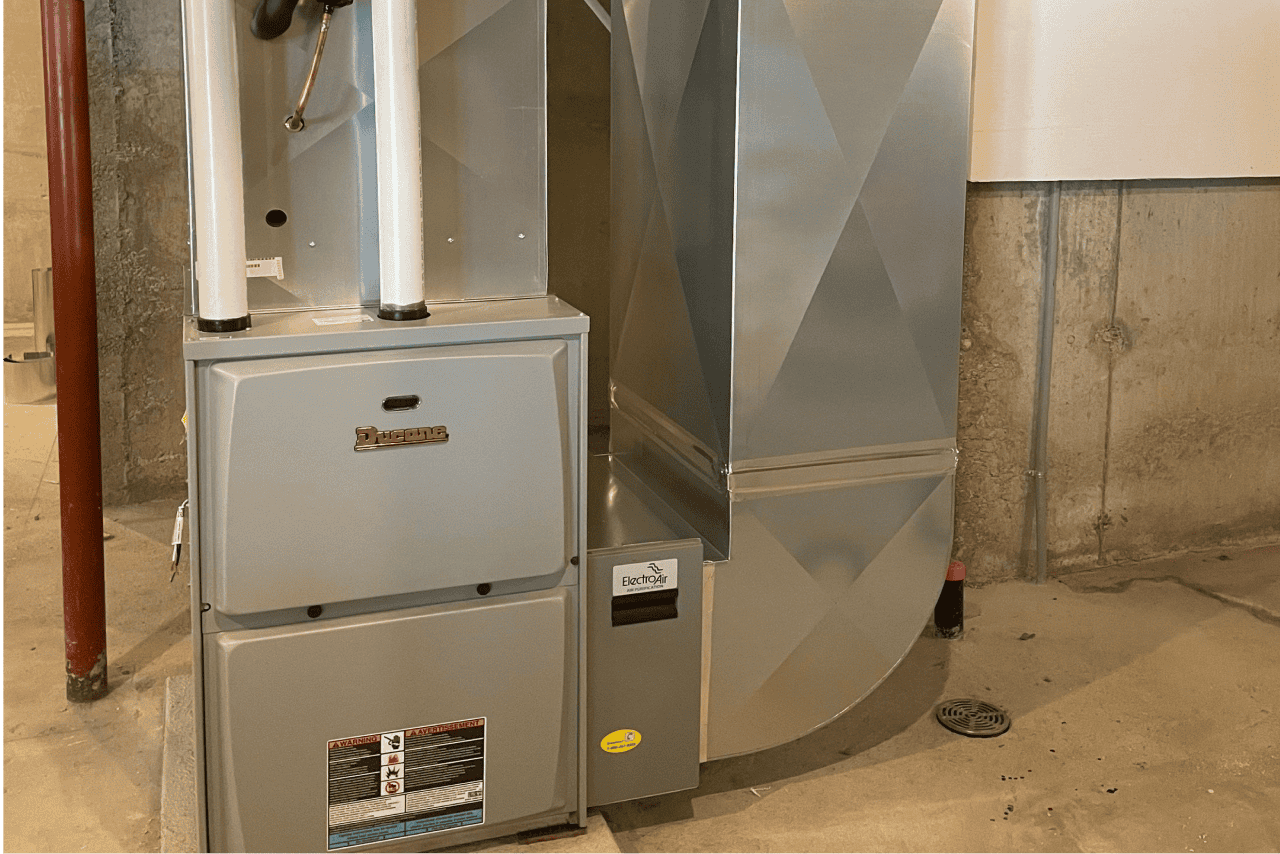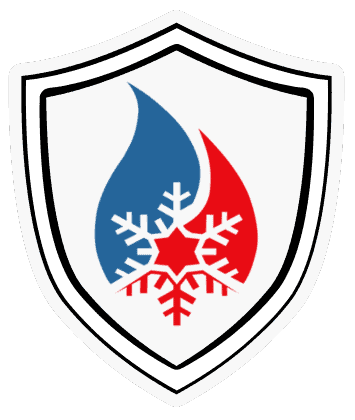Furnace overheating is a serious issue for homeowners, often caused by restricted airflow, faulty limit switches, or clogged filters. Signs include burning smells, unusual noises, and frequent shutdowns. Consequences can be severe, ranging from fire hazards to carbon monoxide leaks and system damage. To prevent overheating, homeowners should regularly replace air filters, guarantee unobstructed vents, and monitor for short cycling. Safety mechanisms like high-limit switches and thermal fuses help protect against dangerous temperatures. However, professional HVAC assistance may be necessary for complex issues. Understanding the causes, recognizing the symptoms, and taking prompt action are indispensable steps in maintaining a safe and efficient home heating system.
Key Takeaways
- Restricted airflow, faulty limit switches, and clogged filters are common causes of furnace overheating.
- Overheating furnaces can lead to fire hazards, carbon monoxide leaks, and increased energy bills.
- Signs of overheating include burning smells, unusual noises, frequent shutdowns, and uneven airflow from vents.
- Regular maintenance, including filter replacement and vent inspection, can prevent many overheating issues.
- Professional HVAC technician assistance is crucial for diagnosing and resolving complex furnace overheating problems.
Why Do Furnaces Overheat?
Furnace overheating can occur due to various factors, including restricted airflow, short cycling, and mechanical failures. An overheating furnace poses significant risks, such as potential fire hazards and damage to internal components.
Common signs of overheating include unusual smells, strange noises, and a constantly running blower. These indicators should not be ignored, as they can lead to decreased energy efficiency and increased utility bills.
Modern furnaces are equipped with safety mechanisms that shut down the system when overheating is detected, preventing further damage and ensuring homeowner safety.
What Causes a Furnace to Overheat?
Several factors can contribute to a furnace overheating, potentially leading to serious consequences for homeowners. Common causes include:
- Restricted airflow due to blocked vents or ducts
- A faulty limit switch that fails to shut off the furnace
- Clogged air filter preventing proper heat distribution
Unusual smells and strange noises are often indicators of an overheating furnace. Regular maintenance and inspections are essential to prevent these issues from occurring.
These issues can affect any household, but regular maintenance can help prevent them. By understanding these causes, you can better protect your home and family from furnace-related problems.
The Dangers of an Overheating Furnace
Understanding the potential dangers of an overheating furnace is paramount for homeowners to guarantee their safety and safeguard their property. An overheating furnace can lead to fire hazards, carbon monoxide leaks, and damage to your home’s heating system.
Unusual smells and strange noises are often early indicators of an overheating furnace, signalling the need for immediate attention. Regular maintenance and inspections are vital to prevent these issues from escalating.
While modern furnaces have built-in safety mechanisms, these can fail. Recognizing signs of overheating early can prevent costly repairs and protect your family from potential harm.
How Safety Mechanisms Protect Against Overheating
While modern furnaces are designed with efficiency in mind, they also incorporate essential safety mechanisms to protect against overheating. These include:
- High-limit switch: shuts off the system when temperatures reach dangerous levels
- Thermal fuse: acts as a backup safety device
- Flame rollout switch: detects flames escaping the combustion chamber
The high-limit switch, also known as the furnace limit switch, is particularly fundamental as it monitors the temperature inside the furnace and prevents it from exceeding a set limit. This helps maintain the safe and efficient operation of the heating system.
These safety features help prevent damage and potential fire hazards, ensuring our homes remain safe and comfortable. Regular maintenance is indispensable to keep these mechanisms functioning properly.
How to Recognize Furnace Overheating Symptoms
Recognizing an overheating furnace is vital for homeowner safety and system longevity. Common symptoms include burning smells, unexpected shutoffs, unusual noises, and reduced airflow, while specific error codes can pinpoint overheating issues.
Loose components and worn-out belts can contribute to overheating by causing excessive friction and strain on the system. Regular maintenance helps prevent these issues and extends the life of your furnace.
Common Symptoms and Warning Signs
As homeowners rely on their furnaces for warmth and comfort, being vigilant to the signs of an overheating system is critical for safety and efficiency. Common symptoms include:
- A persistent burning smell
- Unusual noises like humming
- Frequent shutdowns
Other warning signs are scorch marks, discoloured parts, and uneven airflow from vents. Peculiar odours of burning dust or plastic may also indicate trouble. Loose components can cause rattling or banging sounds, which may be mistaken for overheating symptoms.
Regular maintenance helps prevent these issues and keeps your furnace running smoothly. Recognizing these signs early helps protect your home and family.
Understanding Error Codes Related to Overheating
Modern furnaces are equipped with sophisticated diagnostic systems that generate error codes when problems occur. These codes help homeowners identify issues quickly.
Common error codes related to overheating include those indicating high-limit switch activation or automatic shutdown. Understanding these codes through error code analysis is essential for addressing overheating problems promptly.
Many furnaces have built-in overheating protection features to prevent damage and safeguard. Regular pressure switch inspections can help prevent overheating issues by guaranteeing proper airflow and system functionality.
It’s important to document any error codes or unusual behaviour for reference when troubleshooting or consulting with HVAC professionals.
Differentiating Overheating from Other Furnace Issues
While error codes provide valuable insights, homeowners must also be able to distinguish overheating from other furnace problems through physical signs and symptoms. Blower motor issues can often mimic overheating symptoms, so it’s important to listen for unusual noises during operation.
Recognizing these indicators can help you safeguard your home and family:
- Unusual odours or burning smells
- Frequent cycling on and off
- Unusually high temperature readings
Check the heat exchanger and safety components regularly. Use a temperature measurement tool to monitor your furnace’s performance. Remember, staying vigilant helps secure your heating system’s longevity and your family’s comfort.
How to Diagnose Furnace Overheating Problems
Homeowners can perform basic checks to diagnose furnace overheating problems. Simple tools like thermometers and airflow meters can help identify potential issues causing excessive heat.
Regular maintenance of your heating system, including cleaning or replacing air filters, can prevent many overheating issues from occurring. However, complex overheating problems often require the expertise of a professional HVAC technician for accurate diagnosis and safe resolution.
DIY Checks for Homeowners
Several simple checks can help homeowners diagnose potential furnace overheating problems before they escalate into costly repairs or dangerous situations. Regular maintenance, including thermostat checks, can prevent many common issues.
You can safeguard your home and family by:
- Regularly checking and replacing the air filter
- Ensuring vents are open and unblocked
- Monitoring for short cycling
Listen for unusual noises and look for soot buildup around vents. These DIY checks empower us to maintain a safe, efficient home heating system.
Using Basic Tools to Identify Overheating Issues
Three basic tools can help homeowners accurately diagnose furnace overheating issues: a digital thermometer, an infrared thermometer, and a multimeter. These temperature measurement tools allow us to check for hot spots and abnormal readings.
Combine their use with a visual inspection of the furnace components. Together, we can identify potential problems before they worsen. Regular checks using these tools help maintain a safe, efficient heating system for our homes.
When to Call a Professional HVAC Technician
Despite the usefulness of basic tools for identifying furnace issues, certain situations demand the expertise of a professional HVAC technician. When dealing with overheating problems, homeowners should call licensed HVAC technicians for:
- Accurate diagnosis of complex issues
- Safe inspection of internal components
- Expert advice on repairs or replacement
Regular maintenance by professionals guarantees proper temperature regulation and prolongs furnace’s lifespan. Their specialized knowledge and equipment are indispensable for resolving overheating problems safely and effectively, protecting your home and family.
Preventing Furnace Overheating
Preventing furnace overheating involves regular maintenance and proper airflow management in your home. Routine checks and cleaning of air filters, vents, and registers can greatly reduce the risk of overheating issues.
Upgrading to more efficient furnace models can also help prevent overheating problems and improve overall heating performance.
The Importance of Regular Maintenance
As homeowners, we can protect our investments by:
- Changing air filters monthly
- Scheduling annual professional tune-ups
- Maintaining proper ventilation
These simple steps help prevent small issues from becoming major problems. By prioritizing filter replacement and regular check-ups, we safeguard our homes against costly breakdowns and improve energy efficiency, keeping our families warm and safe.
Proper Airflow Management in Your Home
Effective airflow management plays a critical role in preventing furnace overheating and maintaining ideal HVAC performance. Homeowners can guarantee proper airflow by regularly changing filters, keeping vents unobstructed, and scheduling professional airflow testing.
Duct sealing helps prevent air leaks, improving temperature consistency throughout the home. By prioritizing these simple steps, you’ll create a more comfortable living space and reduce the risk of furnace issues, joining the community of proactive homeowners.
Upgrading to More Efficient Furnace Models
While proper airflow management is key to furnace health, upgrading to a more efficient furnace model offers a thorough solution for preventing overheating issues.
Modern gas furnaces with Energy Star certification provide:
- Improved heat exchangers and controls
- Variable-speed operation for better efficiency
- Enhanced safety features to reduce overheating risks
Investing in a high-efficiency furnace can lead to significant energy savings and improved home comfort. Many homeowners qualify for rebates, making the upgrade more affordable and beneficial in the long run.
How to Address and Prevent Furnace Overheating Issues
When a furnace overheats, immediate action is vital. Homeowners should shut off the furnace and contact an HVAC professional for emergency repairs.
While common fixes may include replacing faulty parts, long-term solutions like regular maintenance or replacing an aging unit can prevent future overheating issues.
Immediate Steps to Take When Overheating Occurs
Faced with a furnace overheating, homeowners must act swiftly to prevent potential damage and secure safety. When your blower motor or thermal cutoff fails, take these immediate steps:
- Shut off power to the furnace
- Contact an HVAC professional for emergency repair
- Avoid DIY repairs, as they can be dangerous
Let the technician diagnose and address the issue, which may involve flame rollout. Discuss preventive measures to avoid future incidents and safeguard your family’s comfort and safety.
Fixing Furnace Overheating: Common Professional Repairs
Once an HVAC professional has diagnosed the cause of your furnace’s overheating, several common repairs may be necessary to address the issue.
These can include replacing a malfunctioning blower motor to guarantee proper airflow, calibrating or replacing the temperature sensor for accurate readings, and repairing or replacing a faulty limit switch.
Long-Term Solutions to Prevent Future Overheating
Proactive homeowners can implement several long-term solutions to prevent future furnace overheating issues. Consider these steps:
- Schedule annual professional maintenance inspections
- Upgrade to a high-efficiency furnace with a better AFUE rating
- Install programmable thermostats for better temperature control
Regular air filter replacements and keeping the furnace area clutter-free are critical.
Energy audits can help verify your furnace is properly sized for your home, preventing short cycling and overheating.
















